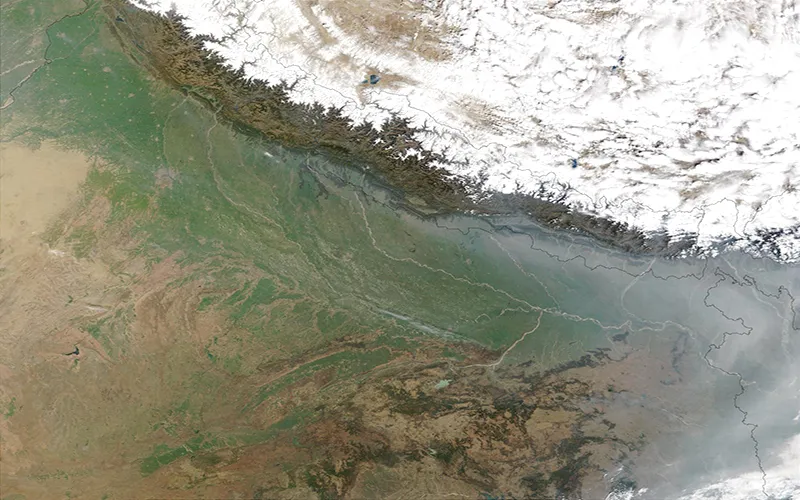-
CENTRES
Progammes & Centres
Location
Australia's Murray-Darling example is not a panacea for the basin-wide river management of the Ganga. And it is not through lack of international role models that a genuinely holistic, basin-wide approach has not been applied to the Ganga; it is through a lack of domestic political will to do so.

Australia has a worldwide reputation for developing a basin-wide river management regime that successfully balances agricultural and domestic uses with environmental flows and cultural rights of the Indigenous population. As such, it seems an obvious good that Australia is assisting India in river basin management. But is it really?
In 2012, the two countries signed the India-Australia Water Science and Technology Partnership to enhance cooperation on water management in the region. The partnership has been gaining momentum since then, and just last week a series of bilateral workshops was held to discuss the lessons from the Australian case that could be applied to the management of the Ganga. This is therefore an opportune moment to question what practical benefit the partnership can bring.
The Ganga and Australia’s Murray-Darling rivers are of the same length. Both are used primarily for irrigation, and both have arguably passed beyond the limits of sustainability. But here the similarities end.
The most obvious difference between the two rivers is the starting point for basin-wide management. More than 500 million people live in the Ganga basin, which s across parts of China, Nepal, Bangladesh and, of course, India. It is a truly international river, though it is rarely conceived as such. In contrast, less than 2 million live in the Murray-Darling basin, that too within the Australian landmass.
The impetus for reform is different in both basins too. For India, the most pressing problem in the Ganga is pollution; for Australia, the driver for reforming basin management on the Murray-Darling was the need for a regulatory framework for a market in water entitlements and allocation.
Certainly, the Murray-Darling provides a good case study of inter-jurisdictional river basin management as the river flows between four states and one territory, and India has a similar federal arrangement as Australia. But in Australia, the states are subject to the legislative powers of the Murray-Darling Basin Authority. In contrast, the National Ganga River Basin Authority holds no such powers, focuses primarily on the issue of pollution and is not truly a basin-wide organisation as it includes neither the upstream nor downstream riparians, Nepal and Bangladesh.
Of course if the two countries were at the same stages of the reform process, there would be even fewer lessons to learn. But while Australia has accomplished a lot to improve governance of the Murray-Darling basin in the past 20 years, it did so from a completely different starting point to India, and therefore it must be questioned whether it is an appropriate model for the Ganga.
Even if we put aside for one moment all the problems that plague the Ganga but not the Murray-Darling (such as poverty, subsistence farming, groundwater depletion, industrial pollution, corruption, inefficiency, etc.) and if we focus only on the cornerstone of the Australian partnership - institutional reform - we can still see that the contexts are incomparable.
Australia is a wealthy, developed country with strong regulatory frameworks and institutional mechanisms. It has the infrastructure and technology to accurately measure water flows throughout the Murray-Darling basin, and no cultural or religious taboos against charging for water. There are no significant disputes between the states as there are in India, and environmental considerations are a high priority for the Australian government.
Yet even with all these favourable factors in place, basin management reform has still been a long and difficult process for Australia! Maybe that is the most significant lesson for the Ganga? That good governance does not happen overnight.
In any case, the Murray-Darling example is not a panacea for the Ganga. And it is not through lack of international role models that a genuinely holistic, basin-wide approach has not been applied to the Ganga; it is through a lack of domestic political will to do so. Political will is the only force that can bring together the disparate strands of river governance - institutional reform, technical capacity, public engagement, principles of Integrated Water Resource Management, etc.
No amount of Australian capacity building will alone mobilise the sort of momentum required from the Indian government, States, private sector and civil society groups to tackle the crisis of water management in the Ganga basin.
Let us then not be under any delusions. The Australia-India partnership on river management is a very important aspect of diplomatic relations between the two countries. But as a means of substantially improving water governance in the Ganga basin, it is just a drop in the ocean of the long-term, multi-faceted, politically committed, multilateral but domestically driven approach that is required.
(Paula Hanasz is a Visiting Fellow at Observer Research Foundation, Delhi)
The views expressed above belong to the author(s). ORF research and analyses now available on Telegram! Click here to access our curated content — blogs, longforms and interviews.